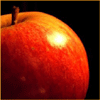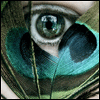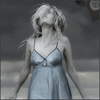Max Huber
S. von Moss
Between 1942 and 1980, Max Huber (1919-92) earned an international reputation as one of the most innovative, distinctive and significant designers of his generation. After an Arts and Crafts education and later graphic apprenticeship in Switzerland, and inspired by the experience of the early modern masters he moved to Milan and started working at the Studio Boggeri. During the war period, he returned to Switzerland where he became a member of 'alliance', the distinguished association of modernist artists, and worked on various editorial projects. After the war, he moved back to Italy and soon started receiving important commissions, such as the one from Giulio Einaudi, a major cultural publisher in Italy, who in 1946 asked him to renew the typography of his Milan-based publishing house. It was during this time that Huber became acquainted with a circle of brilliant left-wing intellectuals and artists, including Italo Calvino, Natalia Ginzburg, Massimo Mila, Cesare Pavese, Fernanda Pivano, and Stefano Terra. Max Huber then worked on a variety of projects, including the socialist newspaper Avanti with Paolo Grassi and the 8th Milan Triennale. He also had a long collaboration with the Castiglioni brothers and later won the first prize in the competition for the poster of the Monza Grand Prix. His consistently brilliant and innovative design attracted people's attention everywhere, and consequently he travelled widely, mixing with the world's artistic elite. He exhibited his work in Europe and Japan, where he also held visiting professorships. Combining painting and photography with other graphic media he remained avant-garde throughout his career, bringing the utopian vision of such legends as Bayer and Moholy-Nagy to bear on corporate typography and brand design. Huber's graphic work is bright, sharp, always surprising and very effective. For this book, an impressive collection of original artwork and archival photographs from the Max Huber Museum shown in twelve thematic portfolios accompany three essays by experts in the field of Italian and Swiss design. In the first chapter, Stanislaus von Moss recounts Huber's formative years in Zurich, and describes the influences and connections with artists and designers on the international scene. In the second chapter, Mara Campana will cover his time in Milan where he gained his first experience at the Studio Boggeri and then went on to design posters, advertisements as well as corporate identities for major publishers and companies. In the third and final chapter, Giampiero Bosoni will focus on Huber's activity in the related fields of interior and exhibition design and in particular on his collaboration with the Castiglioni brothers. Extensively illustrated with over 300 colour images and b&w photographs, this book will be a significant addition to the design list and of interest to design students and researchers as well as to collectors of high-quality visual material.
więcej
Informacje dodatkowe o Max Huber:
Wydawnictwo: angielskie
Data wydania: b.d
Kategoria: Albumy
ISBN:
Liczba stron: 0
Kup książkę Max Huber
Sprawdzam ceny dla ciebie ...
Cytaty z książki
REKLAMA


















Chcę przeczytać,